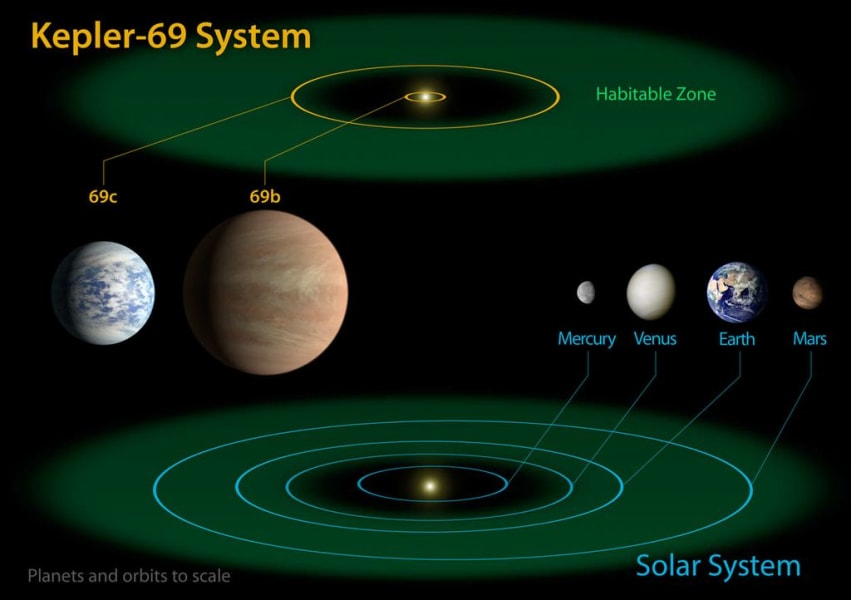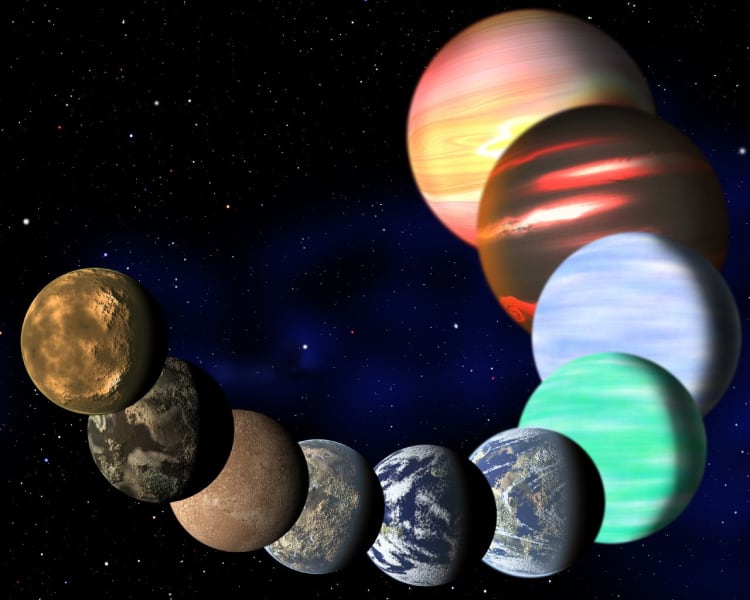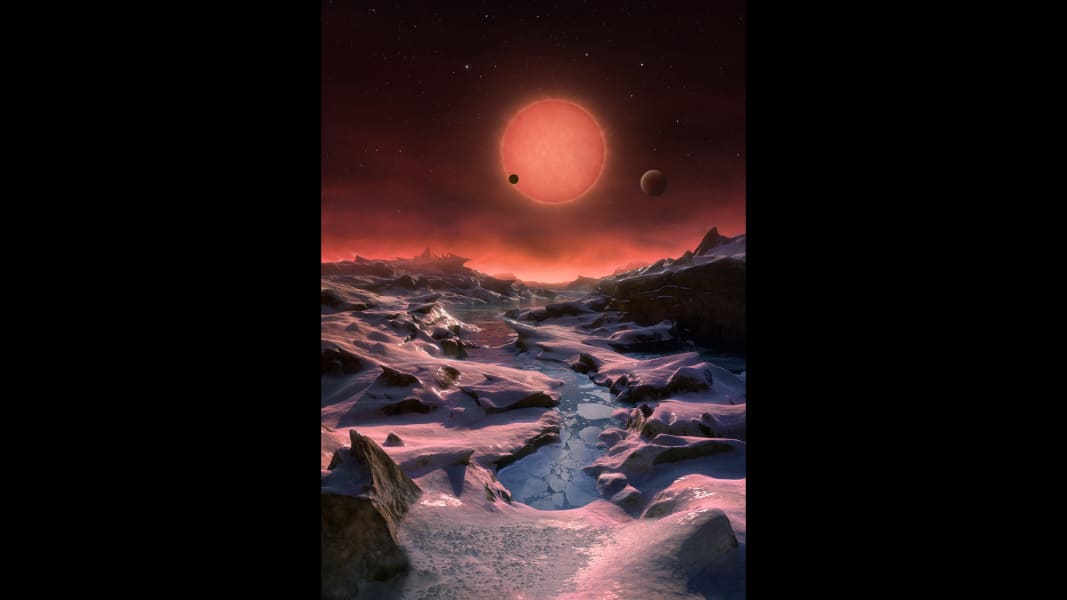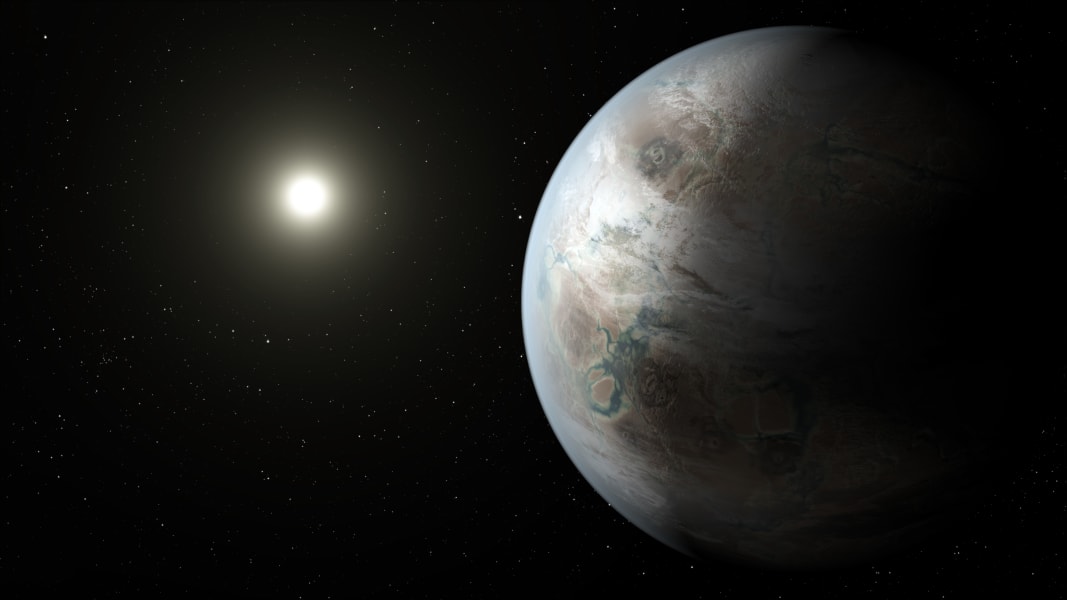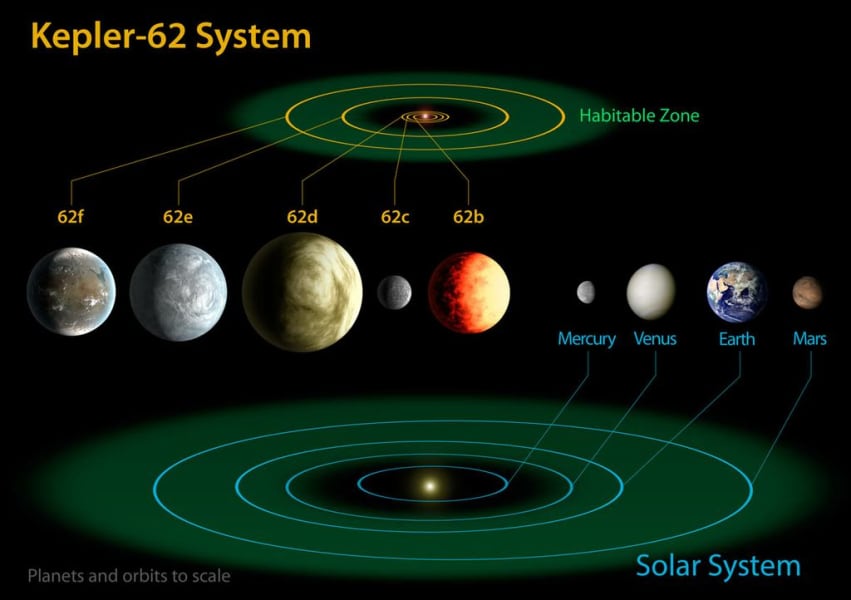Share
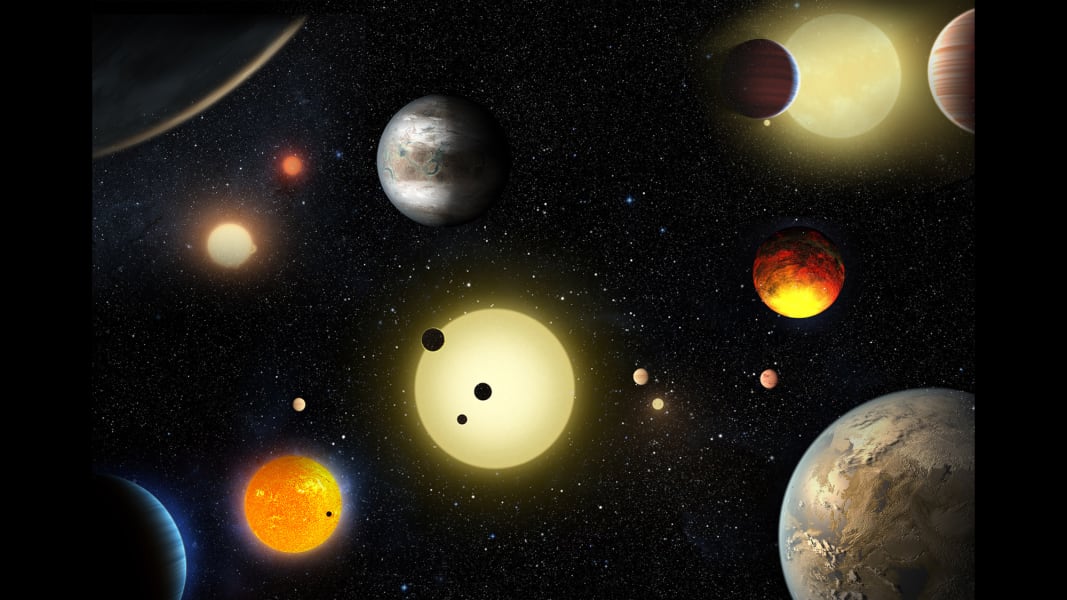

1 of 14
The Kepler mission has discovered 1,284 new planets. Of these newly discovered planets, nine orbit in the habitable zone of their star and nearly 550 are possibly rocky planets roughly around the same size as Earth. Nasa/W. Stenzel
This artist's impression shows an imagined view from the surface one of the three planets orbiting an ultracool dwarf star just 40 light-years from Earth that were discovered using the TRAPPIST telescope at ESO's La Silla Observatory. Given the proximity of the dwarf star, the rosy sun would appear very large in the sky. M. Kornmesser/ESO
On Thursday, July 23, NASA announced the discovery of Kepler-452b, "Earth's bigger, older cousin." This artistic concept shows what the planet might look like. Scientists can't tell yet whether Kepler-452b has oceans and continents like Earth. NASA
Kepler-452b is about 60% larger than Earth, left. It's about 1,400 light-years from Earth in the constellation Cygnus. NASA
A team of astronomers announced April 17, 2014, that they discovered the first Earth-size planet orbiting a star in the "habitable zone": the distance from a star where liquid water might pool on the surface. That doesn't mean this planet has life on it, says Thomas Barclay, a scientist at the Bay Area Environmental Research Institute at Ames and a co-author of a paper on the planet, called Kepler-186f. He says the planet can be thought of as an "Earth-cousin rather than an Earth-twin. It has many properties that resemble Earth." The planet was discovered by NASA's Kepler Space Telescope. It's about 500 light-years from Earth in the constellation Cygnus. The picture above is an artist's concept of what it might look like. NASA Ames/SETI Institute/JPL-Caltech
Scientists announced in June 2013 that three planets orbiting star Gliese 667C could be habitable. This is an artist's impression of the view from one of those planets, looking toward the parent star in the center. The other two stars in the system are visible to the right. ESO/M. Kornmesser
This diagram shows the planets thought to orbit star Gliese 667C, where c, f and e appear to be capable of having liquid water. The relative sizes, but not relative separations, are shown to scale. ESO
This diagram lines up planets recently discovered by Kepler in terms of their sizes, compared with Earth. Kepler-22b was announced in December 2011; the three Super-Earths were announced April 18, 2013. All of them could potentially host life, but we do not know anything definitive about their compositions or atmosphere. NASA/Ames/JPL-Caltech
This illustration depicts Kepler-62e, a planet in the habitable zone of a star smaller and cooler than the sun. It is about 1,200 light-years from Earth in the constellation Lyra. NASA/Ames/JPL-Caltech
This illustration depicts Kepler-62f, a planet in the habitable zone of a star smaller and cooler than the sun, in the same system as Kepler-62e. NASA/Ames/JPL-Caltech
This diagram compares the planets of our own inner solar system to Kepler-62, a five-planet system about 1,200 light-years from Earth. Kepler-62e and Kepler-62f are thought capable of hosting life. NASA/Ames/JPL-Caltech
The planet Kepler-69c is about 2,700 light-years from Earth in the constellation Cygnus. NASA/Ames/JPL-Caltech
This diagram compares the planets of our own inner solar system to Kepler-69, which hosts a planet Kepler-69c that appears to be capable of hosting life, in addition to planet Kepler-69b. NASA/Ames/JPL-Caltech
This artist's illustration represents the variety of planets being detected by NASA's Kepler spacecraft. C. Pulliam & D. Aguilar (CfA)

